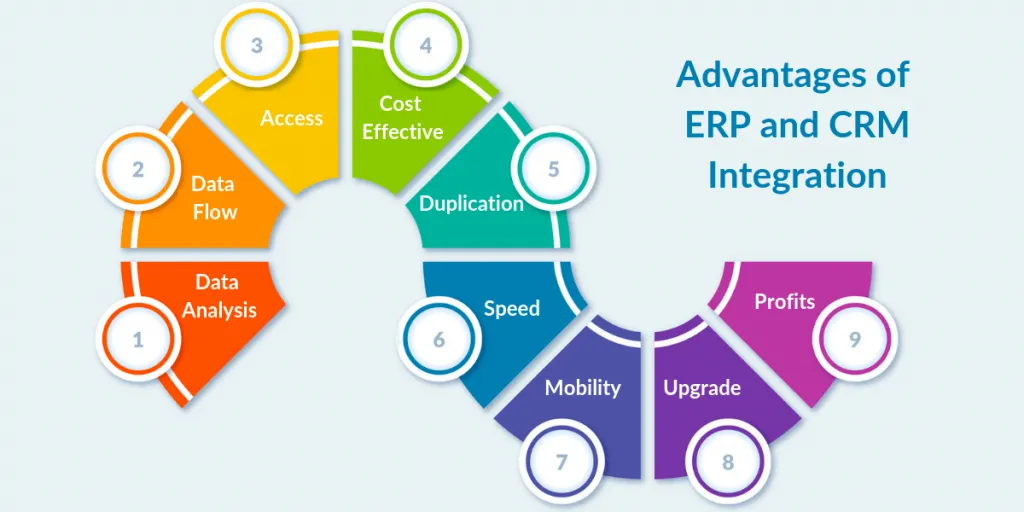As a developer, you understand that your work has the power to revolutionize companies, and maybe whole sectors. Before embarking on corporate software development initiatives, it's crucial to understand what it entails. Is it different from traditional software development?
With so many programming solutions for organizations accessible, knowing the answer to this question will assist developers ensure that their efforts provide good results for all parties involved. In this blog article, we'll go over what Enterprise Software Development comprises and how it varies from conventional software solutions.
What exactly is enterprise software, and what are the many types?
Enterprise software is a vital piece of technology that enterprise firms depend on to perform important operations and activities. It comprises software for corporate resource planning (ERP), customer relationship management (CRM), accounting, and supply chain/logistics.
ERP enterprise systems deliver real-time organizational data, allowing firms to keep informed about the financial health of their company. CRM business software, on the other hand, facilitates the tracking of customer contacts with both prospective and existing customers. Accounting's enterprise operating system is used to handle corporate finances across several departments and regions, where necessary. Finally, supply chain enterprise systems enable businesses to organize tasks such as product purchase, distribution, maintenance, and delivery.
All of these corporate apps are used to save costs, optimize operations, enhance service levels, comply with reporting requirements, and boost revenues.
Read also: The ArcOps: Connected enterprise architecture-operations pipeline
What are the corporate software development technologies?

corporate software technologies are apps and tools designed to handle corporate activities and processes. It often incorporates enterprise resource planning, customer relationship management, enterprise marketing automation, and other services that assist firms in more effectively managing projects. This technology frees up corporate resources, optimizes processes, increases productivity, and streamlines communications, all of which improves the experience for both workers and consumers.
Not only may business software solutions improve insight into areas like as budgeting and operational performance, but they also provide significant economic advantages in terms of keeping ahead of rivals in the long run.
What is one example of corporate software?
Enterprise software is a sort of computer program that is mostly used by major institutions, government organizations, or enterprises to assist them keep track of and effectively handle the vast amounts of data that their company generates. corporate software includes ERP systems, CRM solutions, ECM platforms, corporate mobility management solutions, and other complete business applications.
These solutions are intended to be adaptable to any size organization while maintaining maximum efficiency and control over the enterprise's activities.
Read also: A Description of Small Business Based on Types of Small Businesses
What are the five phases of Enterprise Software Development?
Enterprise development is a difficult and time-consuming process that involves five different phases. The first step is to define the enterprise's vision and goals. This necessitates an examination of the company's industry, objectives, client requirements, competition, and other external and internal elements.
The second step is to develop an enterprise operations plan that bridges the gap between the present state and the desired future. Third, financial planning is required for expenditures like as marketing campaigns, new goods or services, and employee training. The fourth stage focuses on the implementation of enterprise operations, which includes designing procedures for product delivery and customer support activities, as well as monitoring outcomes to capitalize on opportunities and swiftly minimize hazards.
Finally, the assessment process determines if business results meet expectations. These five phases are essential components of business growth, ensuring effective progress toward a prosperous firm.
What are the best techniques for creating corporate software?
Enterprise software is an important tool for organizations today because it provides them with the information, resources, and services they need to function effectively. For business software to be effective, some best practices must be followed. Scalability is important while designing corporate software. This will guarantee that the program does not get overloaded if more users are added or new features are needed.
Furthermore, corporate software should be built to interact smoothly with current applications and follow industry standards for data exchange protocols and security. Third, usability should be a top priority when designing corporate software; if your users struggle to traverse the user interface, they are unlikely to get the most out of your program.
Finally, enterprise software should provide reports and analytics, allowing company owners to monitor their performance in real time. With these best practices in place, business firms can guarantee that their technology functions properly and efficiently in support of their everyday operations.
Read also: What is a business enterprise?
What are the top three advantages of corporate applications?
Enterprise apps give firms with robust business solutions that provide several benefits. From better scalability to improved automation and faster collaboration, enterprise software provides insight, flexibility, and cost savings that enable businesses to extend their operations and optimize their return on investment.
Organizations may remove many time-consuming manual procedures and automate others by employing business apps to improve workflow. This offers the additional advantage of enhancing staff productivity, eliminating human error, and giving real-time results.
Furthermore, business software gives enterprises more control over data storage, enabling them to securely share private information with marketing teams, sales teams, and customers in other regions at any time. The capacity to get this degree of corporate knowledge may be very beneficial to an organization's performance. In brief, corporate apps provide a variety of advantages that are becoming more vital for businesses seeking to stay competitive in today's digital age.
What are the five problems faced by corporate applications?
The adoption of workplace software may provide several obstacles that may impede productivity and organizational objectives. The most typical corporate application challenges include compatibility concerns, scalability, security risks, inadequate user training, and data integration.
With corporate software's vast and ever-changing feature sets, compatibility problems across versions must be monitored and addressed to guarantee correct system interaction. Companies must also examine their scalability requirements in response to possible consumption spikes or changing utilization trends over time. Much care must be paid to protecting corporate apps from hostile actors that may interrupt operations or steal important data.
Enterprise programs cannot work to their full potential unless all system users are properly trained. Finally, effective data integration with current corporate systems is required for seamless communication and cross-platform cooperation.
Read also: The Enterprise Product Manager: What Is It? Value & Role
Which language is best suited for corporate applications and software development?
When it comes to corporate applications, different languages provide varying advantages based on the organization's unique requirements.
- When it comes to corporate development, Object Pascal is akin to a Swiss Army knife since it shines across a wide variety of technologies, from desktop to server and almost everything in between.
- Java is another good language for corporate development because of its scalability, security, and compatibility with numerous web technologies. Bridge technology between Java and Object Pascal may significantly improve productivity in a Java codebase.
- Python is becoming more popular for corporate applications because to its ease and flexibility in developing complicated solutions, as well as its rich library offers. Object Pascal works nicely with Python to increase productivity.
- JavaScript is also a viable alternative for corporate application front-end development due to its mobile adaptability, cross-browser usability, and increasing framework library. Object Pascal may also be combined with JavaScript via a WebView to provide a powerful array of productivity tools.
- C++ is a sophisticated language with impressive performance. When used appropriately, it may provide tremendous advantages to an enterprise software development project. RAD Studio integrates Object Pascal and C++ into a single IDE to increase efficiency.
Finally, the optimal language for corporate applications is determined by the organization's size and purpose.
Read also: Enterprise Architecture: What Is It? Definition and Structures
Which platform works best for corporate apps, and why?
As firms attempt to improve efficiency, they must choose a platform that is dependable and tailored to their specific corporate requirements. Cloud-based systems are becoming more popular as an enterprise solution because they enable firms to grow fast and handle massive volumes of data.
Furthermore, cloud-based corporate apps are usually less expensive since many of these platforms host several clients in the same environment. Regardless of the kind of business application, it is critical to extensively examine all available platforms before deciding on one that satisfies both the company's requirements and budget.
RAD Studio and Object Pascal provide a broad range of connectors with cloud services such as AWS and Azure. Additionally, RAD Server enables Object Pascal developers to easily purchase and deploy REST microservices.
Conclusion
Finally, Enterprise Software Development is critical in today's business environment, allowing firms to simplify processes, increase efficiency, and accomplish strategic goals. Enterprises may design personalized software solutions that handle difficult issues and promote growth by combining cutting-edge technology, strong development techniques, and a thorough grasp of business objectives. As organizations expand and adapt to changing market conditions, the value of agile, scalable, and creative software development techniques cannot be overestimated. With a focus on quality, cooperation, and continuous development, businesses can use software to remain competitive, innovate, and provide value to consumers in today's digital world.
Read also: Enterprise Technology: What Is It? Determining and Using










